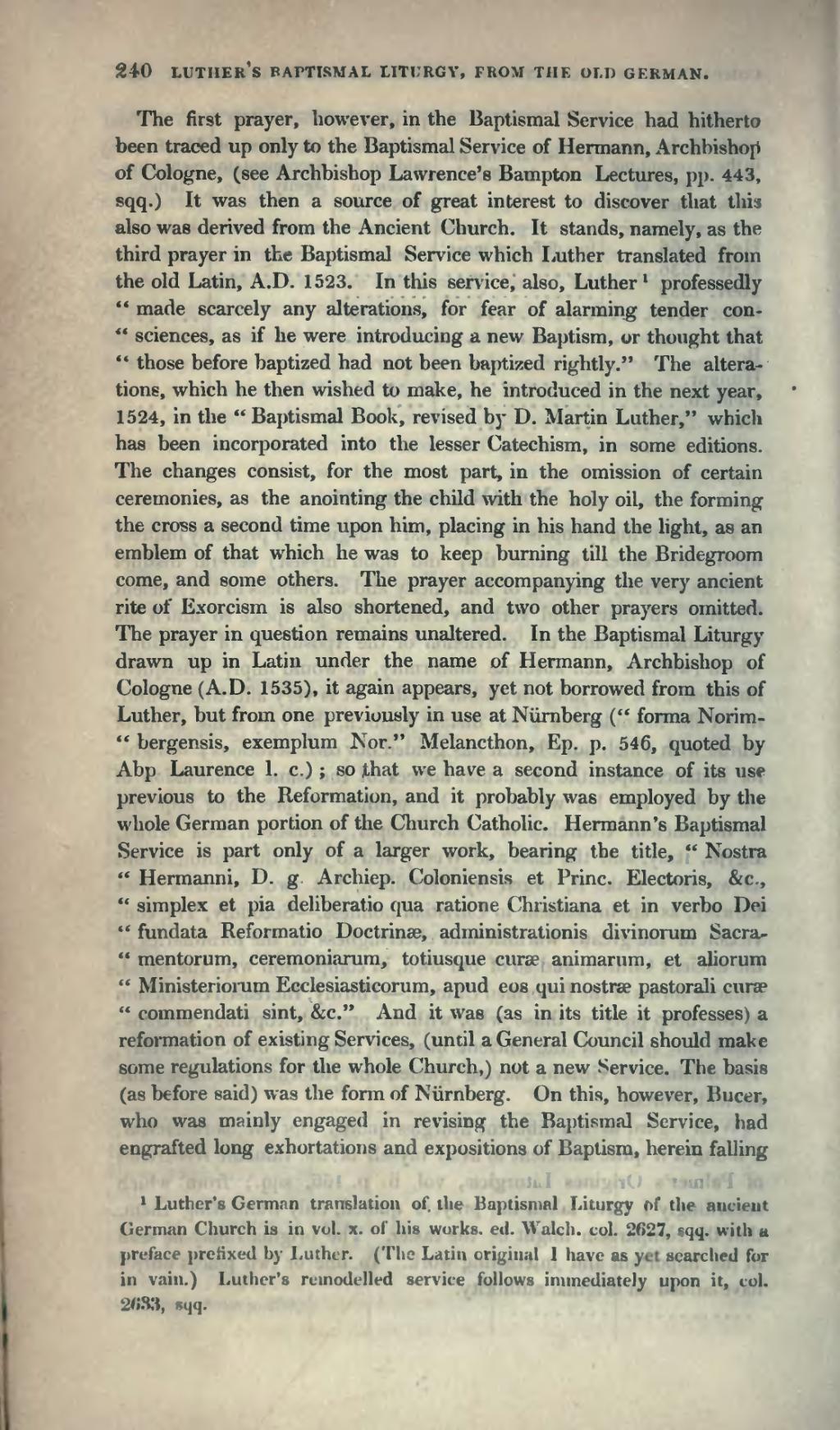The first prayer, however, in the Baptismal Service had hitherto been traced up only to the Baptismal Service of Hermann, Archbishop of Cologne, (see Archbishop Lawrence's Bampton Lectures, pp. 443, sqq.) It was then a source of great interest to discover that this also was derived from the Ancient Church. It stands, namely, as the third prayer in the Baptismal Service which Luther translated from the old Latin, A.D. 1523. In this service, also, Luther[1] professedly "made scarcely any alterations, for fear of alarming tender consciences, as if he were introducing a new Baptism, or thought that those before baptized had not been baptized rightly." The alterations, which he then wished to make, he introduced in the next year, 1524, in the "Baptismal Book, revised by D. Martin Luther," which has been incorporated into the lesser Catechism, in some editions. The changes consist, for the most part, in the omission of certain ceremonies, as the anointing the child with the holy oil, the forming the cross a second time upon him, placing in his hand the light, as an emblem of that which he was to keep burning till the Bridegroom come, and some others. The prayer accompanying the very ancient rite of Exorcism is also shortened, and two other prayers omitted. The prayer in question remains unaltered. In the Baptismal Liturgy drawn up in Latin under the name of Hermann, Archbishop of Cologne (A.D. 1535), it again appears, yet not borrowed from this of Luther, but from one previously in use at Nürnberg ("forma Norimbergensis, exemplum Nor." Melancthon, Ep. p. 546, quoted by Abp Laurence l.c.); so that we have a second instance of its use previous to the Reformation, and it probably was employed by the whole German portion of the Church Catholic. Hermann's Baptismal Service is part only of a larger work, bearing the title, "Nostra Hermanni, D. g. Archiep. Coloniensis et Princ. Electoris, &c., simplex et pia deliberatio qua ratione Christiana et in verbo Dei fundata Reformatio Doctrinse, administrationis divinorum Sacramentorum, ceremoniarum, totiusque curæ animarum, et aliorum Ministeriorum Ecclesiasticorum, apud eos qui nostræ pastorali curæ commendati sint, &c." And it was (as in its title it professes) a reformation of existing Services, (until a General Council should make some regulations for the whole Church,) not a new Service. The basis (as before said) was the form of Nürnberg. On this, however, Bucer, who was mainly engaged in revising the Baptismal Service, had engrafted long exhortations and expositions of Baptism, herein falling
- ↑ Luther's German translation of the Baptismal Liturgy of the ancient German Church is in vol. x. of his works, ed. Walch. col. 2627, sqq. with a preface prefixed by Luther. (The Latin original I have as yet searched for in vain.) Luther's remodelled service follows immediately upon it, col. 2633, sqq.

